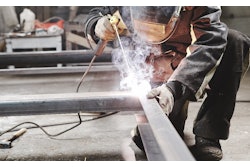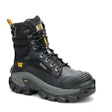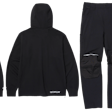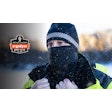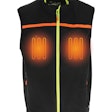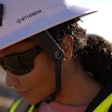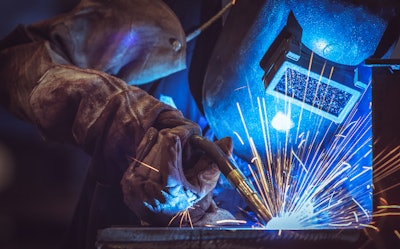
Given that welding entails the use of high heat generated by an electric arc or flame to join metals together by melting and fusing them, it is critical those performing the work are well protected.
While more than 428,000 people are employed as welders in the U.S., according to the U.S. Bureau of Labor Statistics, industry statistics indicate more than half a million U.S. workers are at risk of welding-related injuries, resulting in the deaths of approximately 60 workers each year in the U.S.
Common welding hazards include exposure to fumes and gases, burns, eye damage, crushed digits, electric shock, fire and explosions.
Welding Jacket 101
A welding jacket is a key piece of welding Personal Protective Equipment (PPE) that also includes gloves, aprons, leggings, cap sleeves, shoulder covers with bibs made of leather, flame-resistant ear protection and flame-resistant caps under helmets to prevent head burns.
Occupational Health and Safety Administration (OSHA) Welding, Cutting and Brazing general requirements 1910.252(b)(3) for protective clothing indicates employees exposed to the hazards created by welding, cutting or brazing operations shall be protected by PPE.
Protective equipment for eyes, face, head, and extremities, protective clothing, respiratory devices and protective shields and barriers shall be provided, used and maintained in a sanitary and reliable condition wherever it is necessary by reason of hazards of processes or environment, chemical hazards, radiological hazards or mechanical irritants encountered in a manner capable of causing injury or impairment in the function of any part of the body through absorption, inhalation or physical contact.
ANSI Z49.1:2021, the standard for Safety in Welding, Cutting, and Allied Processes indicates protective clothing shall be selected to minimize the potential for ignition, burning, trapping hot sparks or electric shock.
The clothing shall provide sufficient coverage and be made of suitable materials to minimize skin burns caused by sparks, spatter or radiation.
Among components found in welding jackets that enhance safety is the material from which it is made. Flame resistant materials can endure exposure to sparks and flames without catching fire. Heat resistant fabric helps prevent the shirt from burning or melting when exposed to high temperatures.
The ANSI standards note that heavier materials such as leather or flame resistant clothing which has been chemically treated to reduce its combustibility or is inherently flame-resistant are preferable to lighter materials because they are more difficult to ignite.
Clothing treated with flame resistant materials may lose some of its protective characteristics after repeated washing or cleaning. Manufacturer’s recommendations for care of flame resistant clothing should be followed.
Materials which can melt and cause severe burns should not be used as clothing when welding or cutting. Sparks may lodge in rolled-up sleeves and pockets of clothing. It is therefore recommended that sleeves and collars of welding jackets be kept buttoned and pockets be eliminated from the front of clothing.
Welding Jacket Safety
When pockets are present on welding jackets, they should be emptied of flammable or readily combustible materials. Long sleeves on welding jackets provide complete coverage of the arms and protection from sparks and radiant heat. Collars and cuffs are designed to protect the neck and wrists from sparks and UV/IR radiation.
Button or snap closures are used on welding jackets instead of zippers as they can melt under extreme heat. Because welders are working in hot environments, many welding jackets may be designed with ventilation features such as underarm vents to help keep the welder cool in the hot working environment.
High-visibility colors also help the welder stand out in the environment in which he or she is working. As more women have entered the construction workforce, it is important that they source welding jackets designed for women as to not expose them to hazards when wearing a welding jacket designed for men that is ill-fitting for women.
Frayed clothing is particularly susceptible to ignition and burning and should not be worn when welding or cutting. Appropriate protective clothing for any welding and cutting operation will vary with the size, nature and location of the work to be performed.
It is up to a safety director to assess a work environment for hazards and help welders select the proper PPE to mitigate risks while ensuring comfort and compliance with industry standards.
